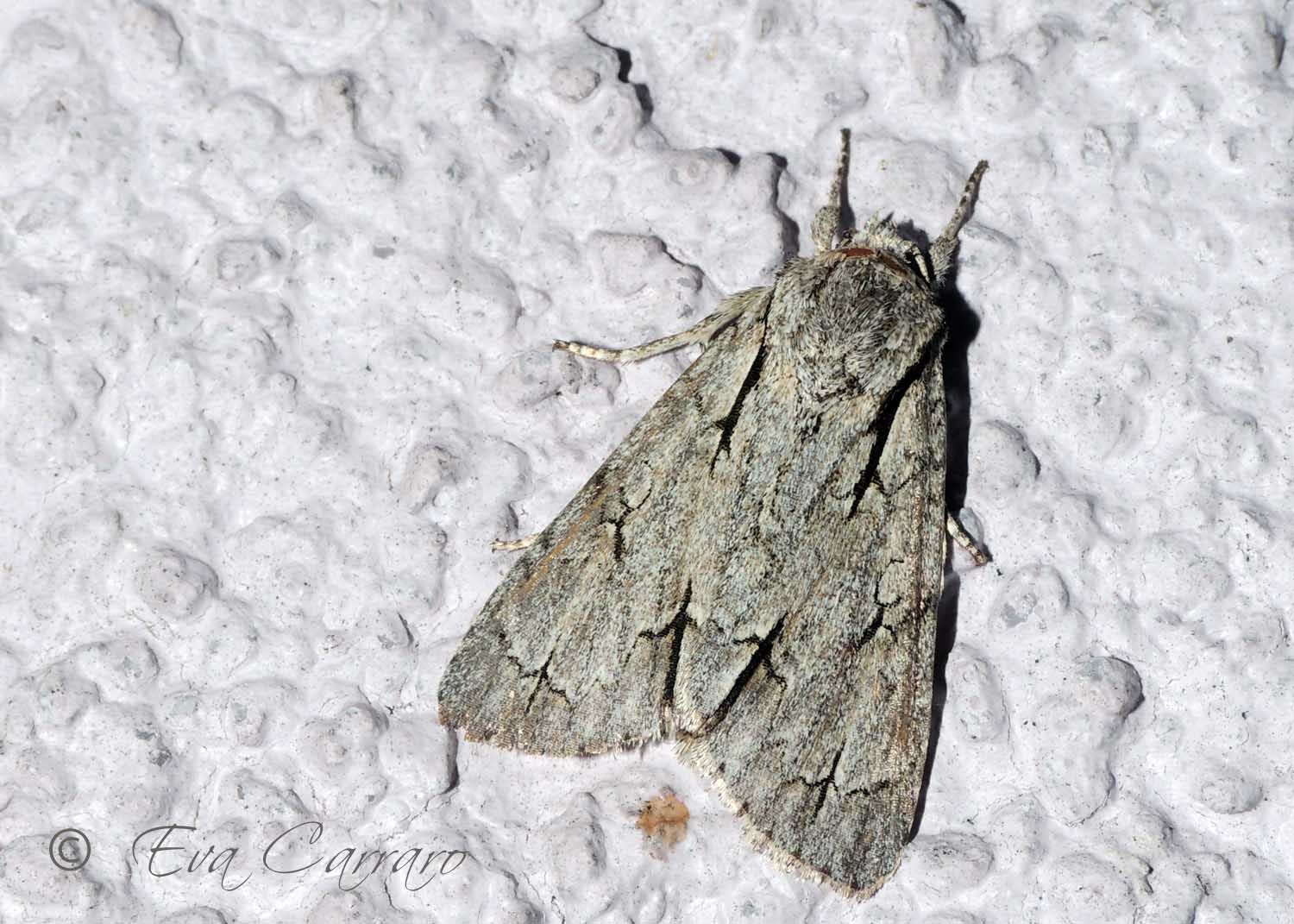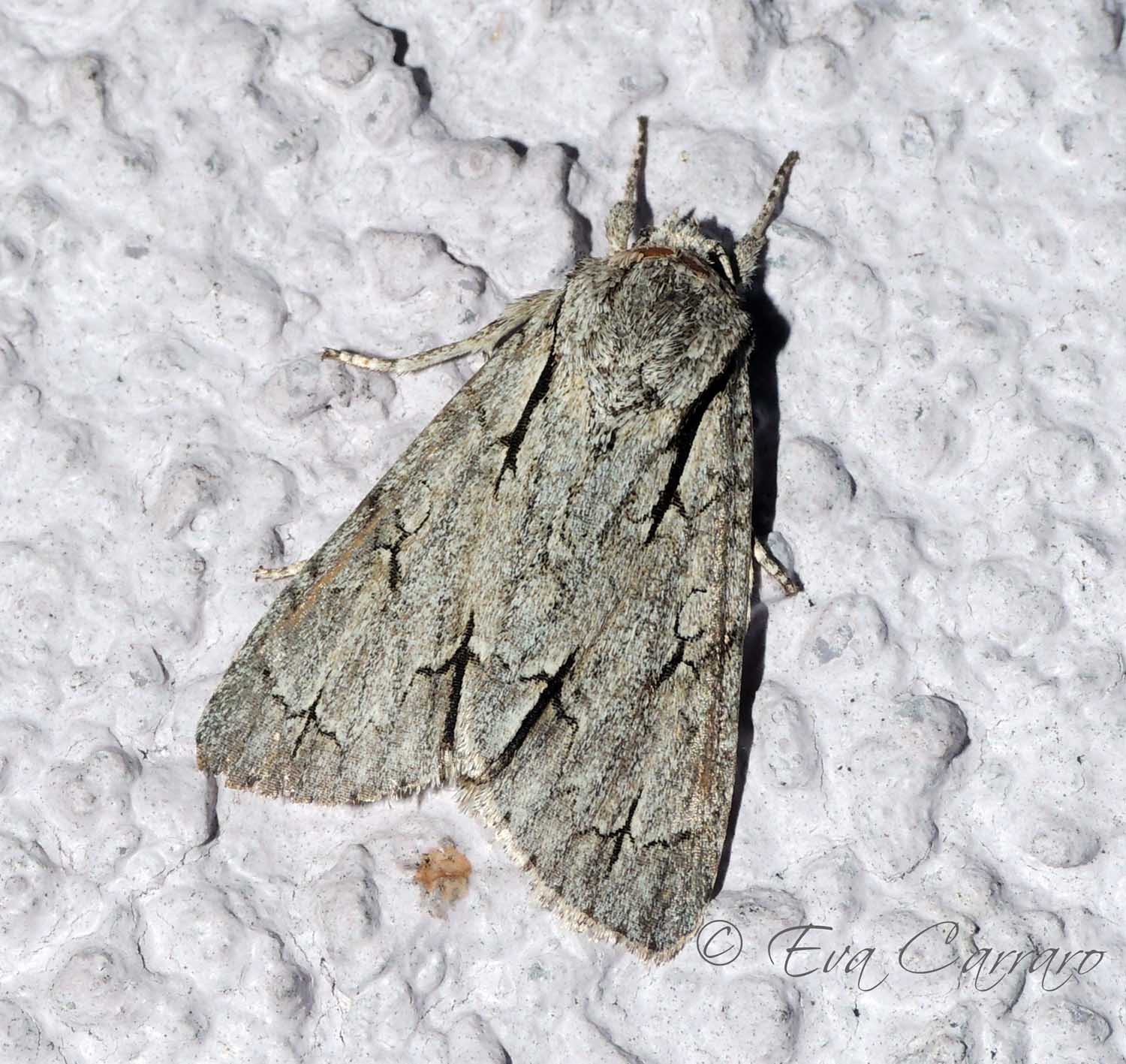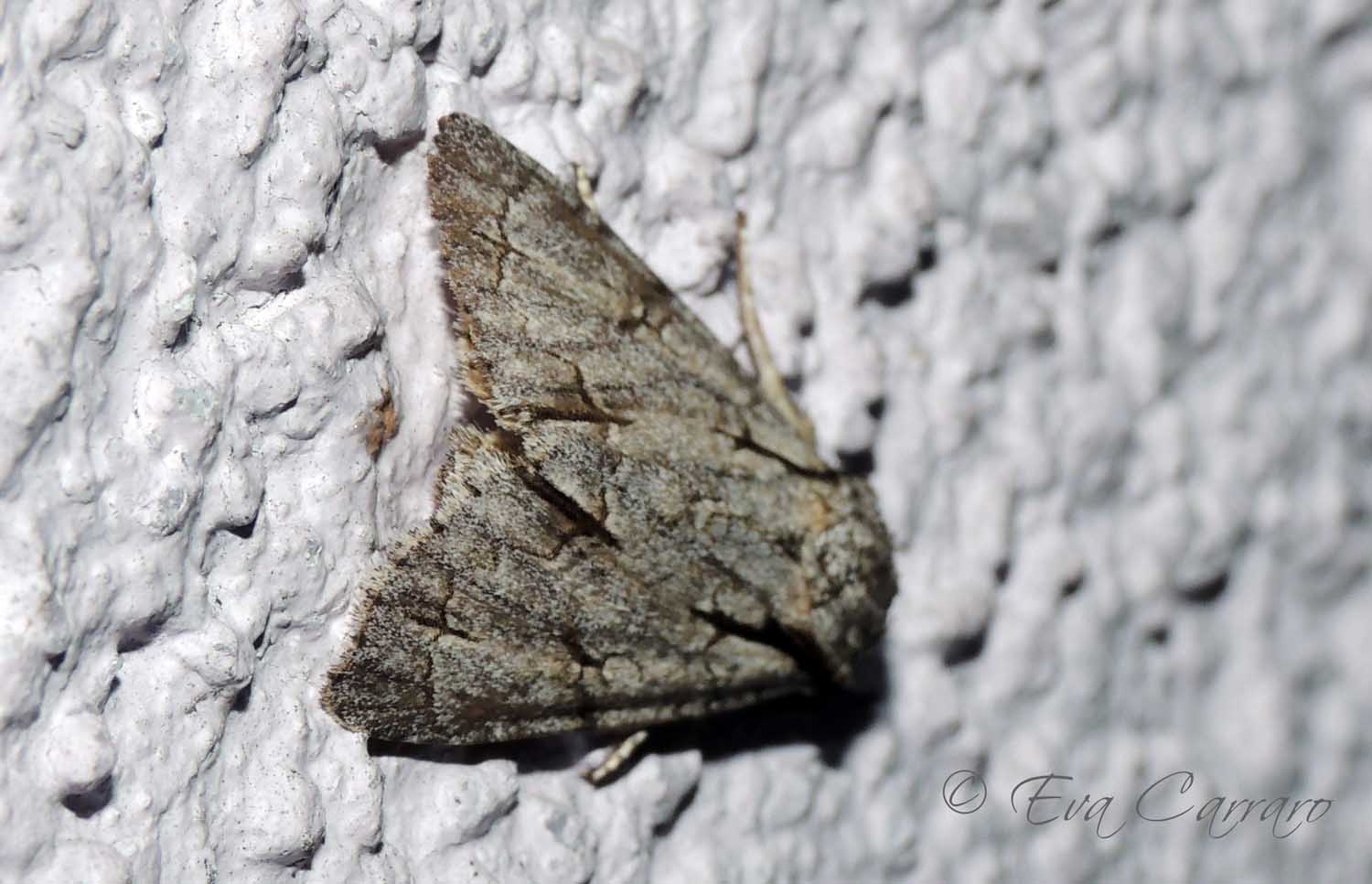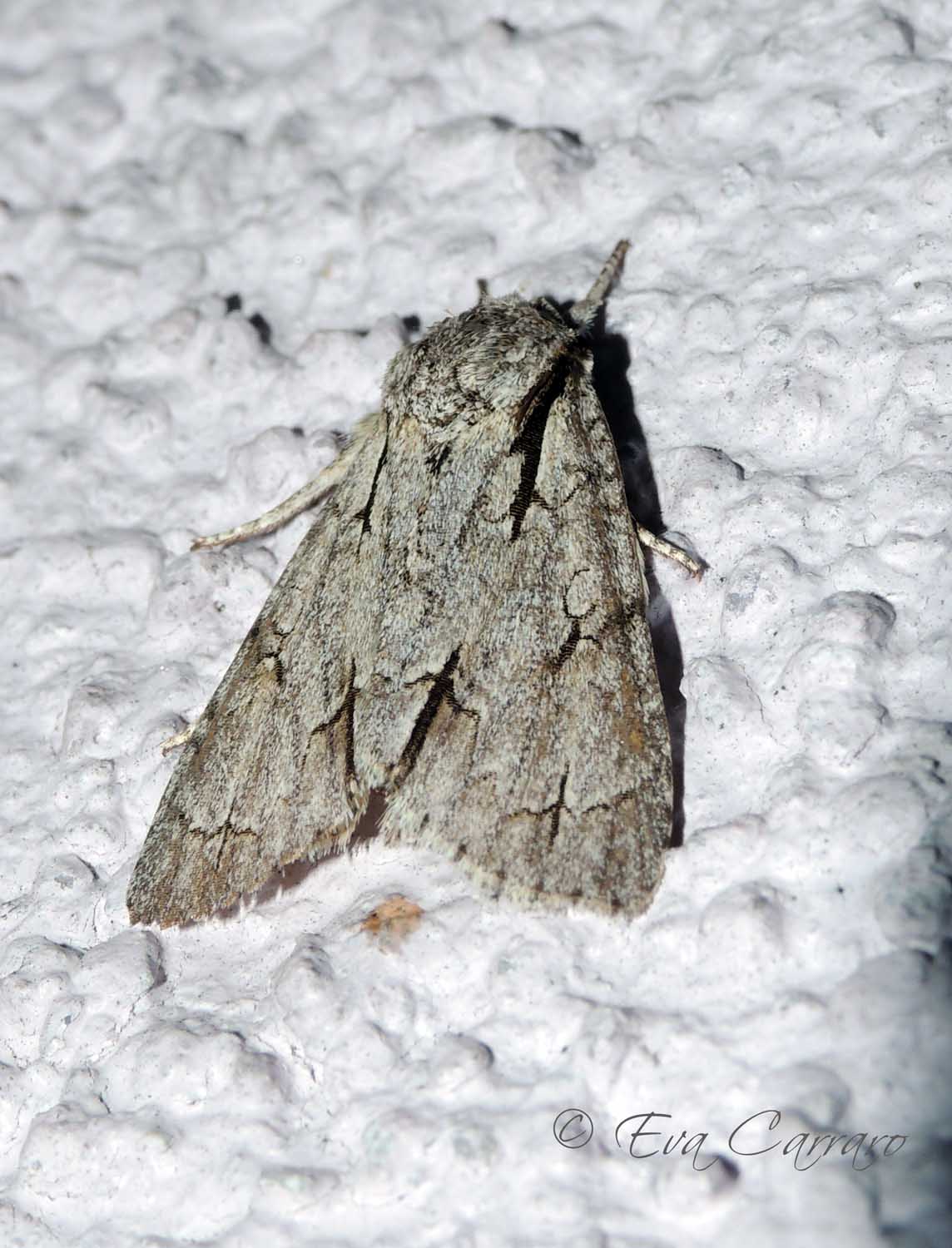Acronicta (Triaena) cf. tridens
([Denis & Schiffermüller], 1775)
-
 Subfamily: Acronictinae
Subfamily: Acronictinae -
 Wingspan: 37-44 mm
Wingspan: 37-44 mm -
 Flight period: May - Sep
Flight period: May - Sep -
 Spread: Common
Spread: Common -
 Host plants: Polyphagus
Host plants: Polyphagus
Information
The Acronicta tridens also called Dark Dagger is a moth of the Noctuidae family, Acronictinae subfamily, with a wingspan of 37-44 mm.
It is distributed in most of Europe, it is absent from Ireland and Iceland.
In Italy it is also present in the islands. *
Its range extends to Turkey, the Middle East, the European part of Russia, southern Siberia, the Urals, the Russian Far East (Primorye, southern Khabarovsk,
southern Amur region and Sakhalin), the Korean peninsula, China and Japan (Hokkaido). ****
The wings of the Acronicta tridens are gray with black markings in the shape of a dagger ψ , starting from the basal region in the direction of the external margin.
Other markings are visible both on the wing and on the costa. **
The hind wings are dirty gray, generally lighter in the male.
Head, thorax and abdomen are in the colors of the wings.
The coloring of the adults is almost identical to the congener Acronicta tridens , even if generally the coloring is lighter, the determination of the species has been
made on the basis of this last characteristic but cf. it is a must.
bivoltine moth the Acronicta tridens flies mainly in two generations sometimes overlapping from May to September *** depending on the latitude,
it is mainly nocturnal and is attracted to light and sugary substances.
The Acronicta tridens larva has many hairs, and has orange and white spots along the sides, yellow / orange stripe with a thin dark line in the center along the back.
The black dorsal tubercles with a white spot in the center are clearly visible
Caterpillars are found from June to early October. **
The species overwinters at the pupal stage sometimes spending two winters in this form.
The chrysalis is dark brown / brown in color with numerous appendages on the Cremaster. **
The larva The larva is polyphagous and feeds on herbaceous and shrubby plants as well as on deciduous trees, in fact we find it on Salix caprea, Urtica, Rumex obtusifolius,
Rubus fruticosus, Euphorbia cyparissias, Calluna vulgaris, Plantago lanceolata, Centaurea jacea, Taraxacum thistle, mint and others.
* Lepidoptera mundi https://lepidoptera.eu/ - Fauna Europea https://fauna-eu.org/
** Bestimmungshilfe für die in Europa nachgewiesenen Schmetterlingsarten - http://lepiforum.de/
*** Roland Robineau, Guide de papillons nocturne de France, Delachaux et Niestlé, 2011 p.112
**** Skinner, Bernard Color Identification Guide to Moths of the British Isles 1984





 EN
EN ITA
ITA
Social and publications